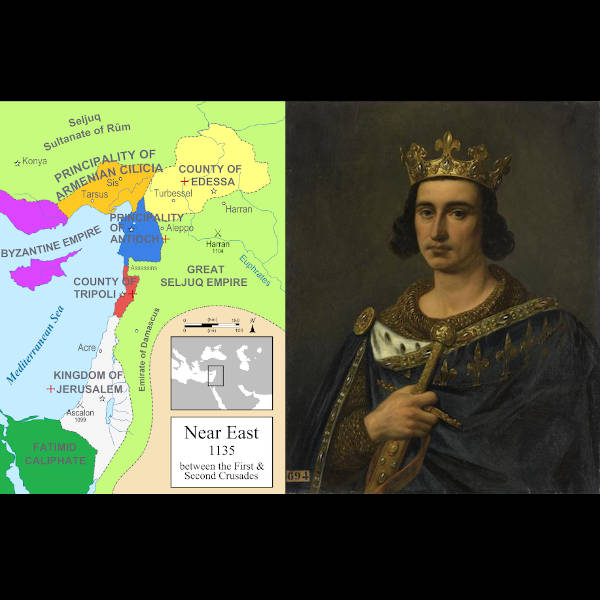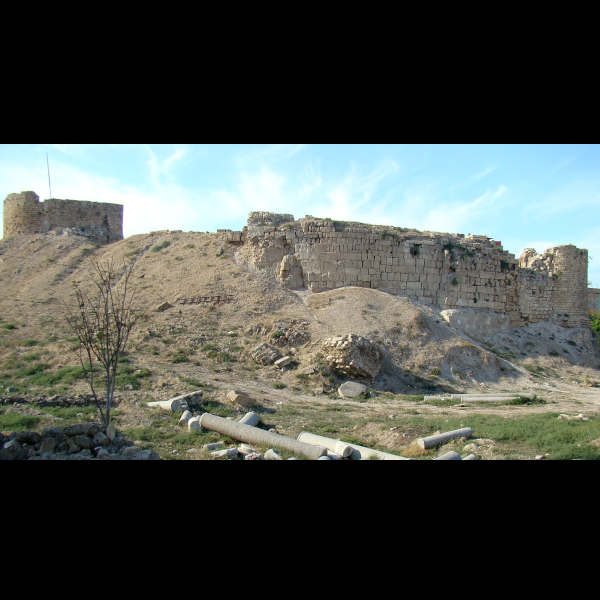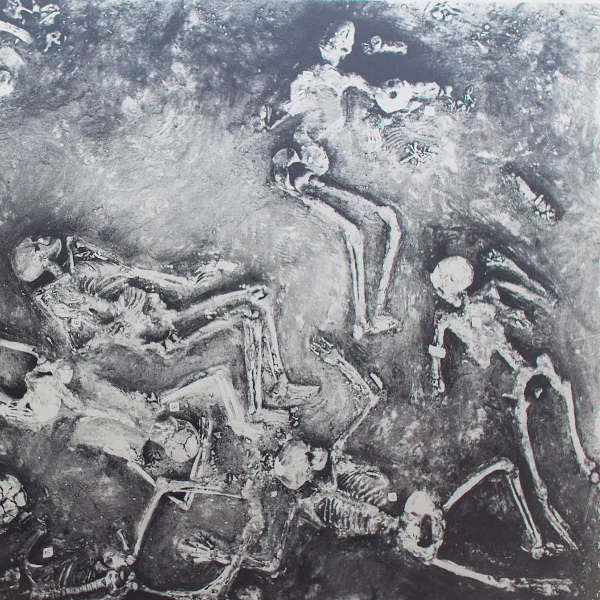DNA spotlight
The 7th Crusade
The Crusader States (also known as Outremer) were created after the First Crusade (1095-1102) as a way to keep hold of territorial gains by Christian armies in the Middle East. Crusader castles were built all over Outremer to serve not only as defensive structures, but also as administrative and economic centers designed to last for many years to come. The four small Outremer states were the Kingdom of Jerusalem, the County of Edessa, the Country of Tripoli and the Principality of Antioch. This analysis focuses on the former Phoenician and later Roman colony of Sidon / Saida which remained in Arab hands until 1110 when King Baldwin I of Jerusalem and King Sigured I of Norway captured it. The city was then re-captured by the masterful Saladin in 1187, only to be re-taken by German Crusaders in 1197. It remained a key Crusader stronghold until the Saracen invasion of 1249 when it was destroyed - this series of exchanges presented the backdrop for the ill-fated 7th Crusade.

The 7th Crusade was led by Louis IX of France from 1248 to 1254. Jerusalem had recently fallen and there was no popular enthusiasm at the time for a new crsusade, as Europe was involved in many internal conflicts. Bela IV of Hungary was rebuilding his kingdom from ashes after the devastating Mongol invasion of Europe. Henry III of England was struggling at home and Haakon IV of Norway was in the midst of a civil war. Louis IX was almost alone in declaring a new crusade to the east and in 1248 sailed from Aigues-Mortes and Marseilles with an army of 15,000. They sailed for Cyprus but Louis decided to focus first on attacking Egypt. While marching towards Cairo, Louis' main force was attacked by Mameluk Baibars and defeated. In 1250 while attempting to return to a safer location, Louis himself was captured and taken prisoner after his army was annihilated. He was ransomed for 800,000 bezants after which he fled to Acre, one of the safest crusader strongholds in Outremer. The French King re-enforced local defenses and moved north to Sidon.

The Castle of St. Louis is located on the acropolis of the ancient city of Sidon. The land castle incorporated parts of the city walls and had existed since at least 1162. It was restored and fortified by Louis IX to live in between 1250 and 1254 during the Frankish occupation of Sidon. The French king, Louis IX, better known as St. Louis, appears to have spent a long time at the castle which is why it took his name. In 1253 the town was under a Muslim attack and 2000 people were killed. Afterwards, the castle was left in the hands of the Hospitaliers, an elite military organization based in Jerusalem (which later relocated to the island of Rhodes). In 1260 the Mongols sieged the city and castles. Later that year the Knights Templar took charge of the land castle which was reconfirmed in 1283. This would all change in 1291 when the Templars led an evacuation of Sidon after the fall of the major crusader stronghold Acre.

Nine male skeletons were uncovered in a burial pit next to the Castle of St. Louis dating to the 13th century. The men had been killed violently in battle, based on the evidence of blunt force injuries on the skulls and bones. The bodies were dumped in the pit and burned. Carbon-14 dating of the European shoe buckles indicates mid 13th century and a coin found alongside the remains is dated 1250. This confirms the bodies are indeed from this period of the 7th crusade which means they were deposited there following a battle likely in 1253 against Muslims or in 1260 against Mongols. The remains suggest the soldiers making up the Crusader armies were genetically divcerse and intermixed with the local population in the Near East - although today there is no lasting effect on the local population. However these bodies clearly show that Europeans, Near Easterners and mixed invdividuals were living and dying side by side in the Crusades.
Sample: Crusader Knight Georgian / Lebanon
- Sample ID: SI-38
- Year: 1250 AD
- Sex: Male
- Location: 33.5671,35.3710
Sample: Crusader Knight Celto-Germanic / Lebanon
- Sample ID: SI-39
- Year: 1250 AD
- Sex: Male
- Location: 33.5671,35.3710
Sample: Crusader Knight French / Lebanon
- Sample ID: SI-40
- Year: 1250 AD
- Sex: Male
- Location: 33.5671,35.3710
Sample: Crusader Knight Tuscan / Lebanon
- Sample ID: SI-41
- Year: 1250 AD
- Sex: Male
- Location: 33.5671,35.3710
Sample: Crusader Knight Syrian / Lebanon
- Sample ID: SI-42
- Year: 1250 AD
- Sex: Male
- Location: 33.5671,35.3710
Sample: Crusader Knight Armenian / Lebanon
- Sample ID: SI-44
- Year: 1250 AD
- Sex: Male
- Location: 33.5671,35.3710
Sample: Crusader Knight Mix / Lebanon
- Sample ID: SI-45
- Year: 1250 AD
- Sex: Male
- Location: 33.5671,35.3710
Sample: Crusader Knight Celto-Germanic / Lebanon
- Sample ID: SI-47
- Year: 1250 AD
- Sex: Male
- Location: 33.5671,35.3710
Sample: Crusader Knight Tuscan / Lebanon
- Sample ID: SI-53
- Year: 1250 AD
- Sex: Male
- Location: 33.5671,35.3710
